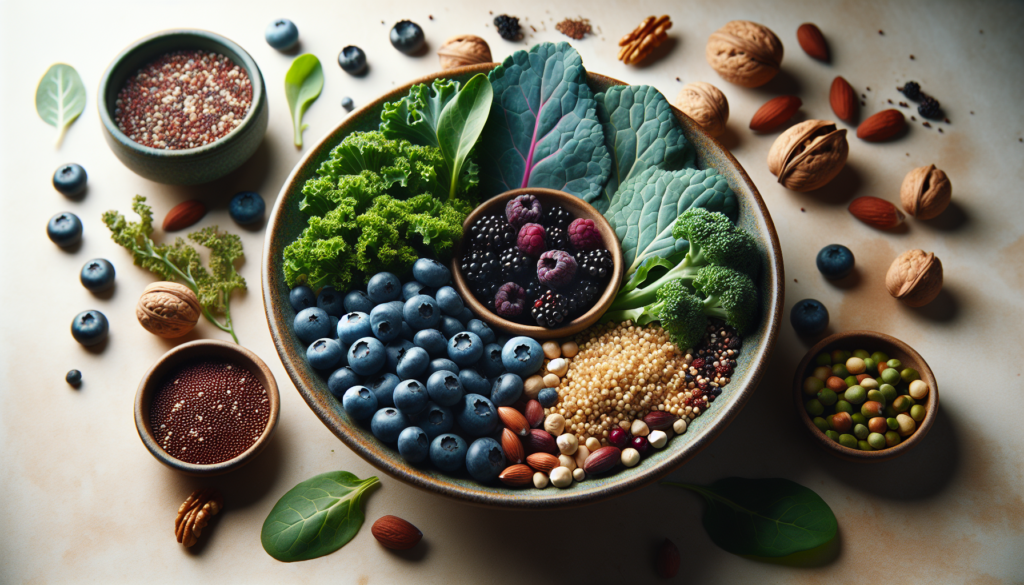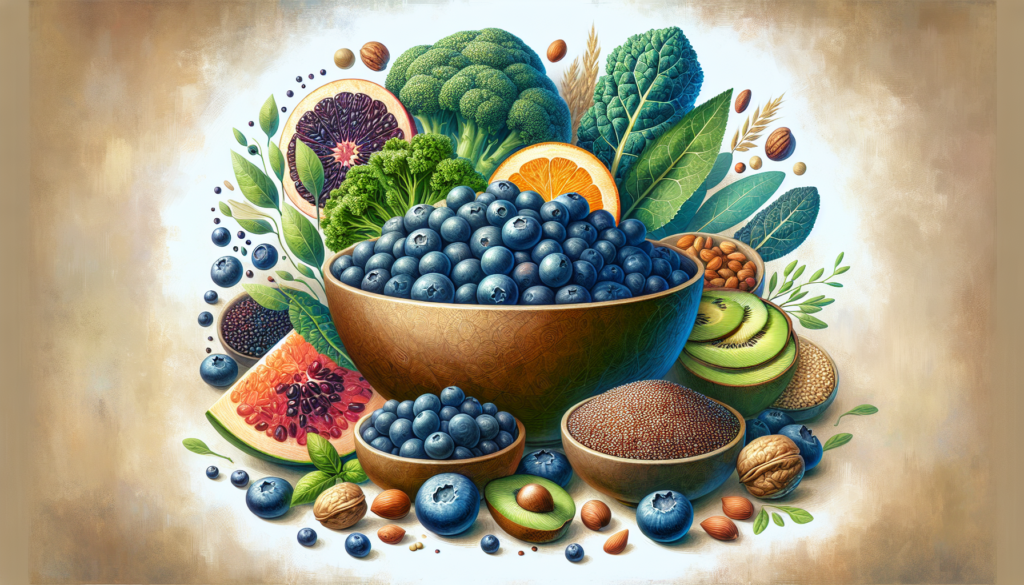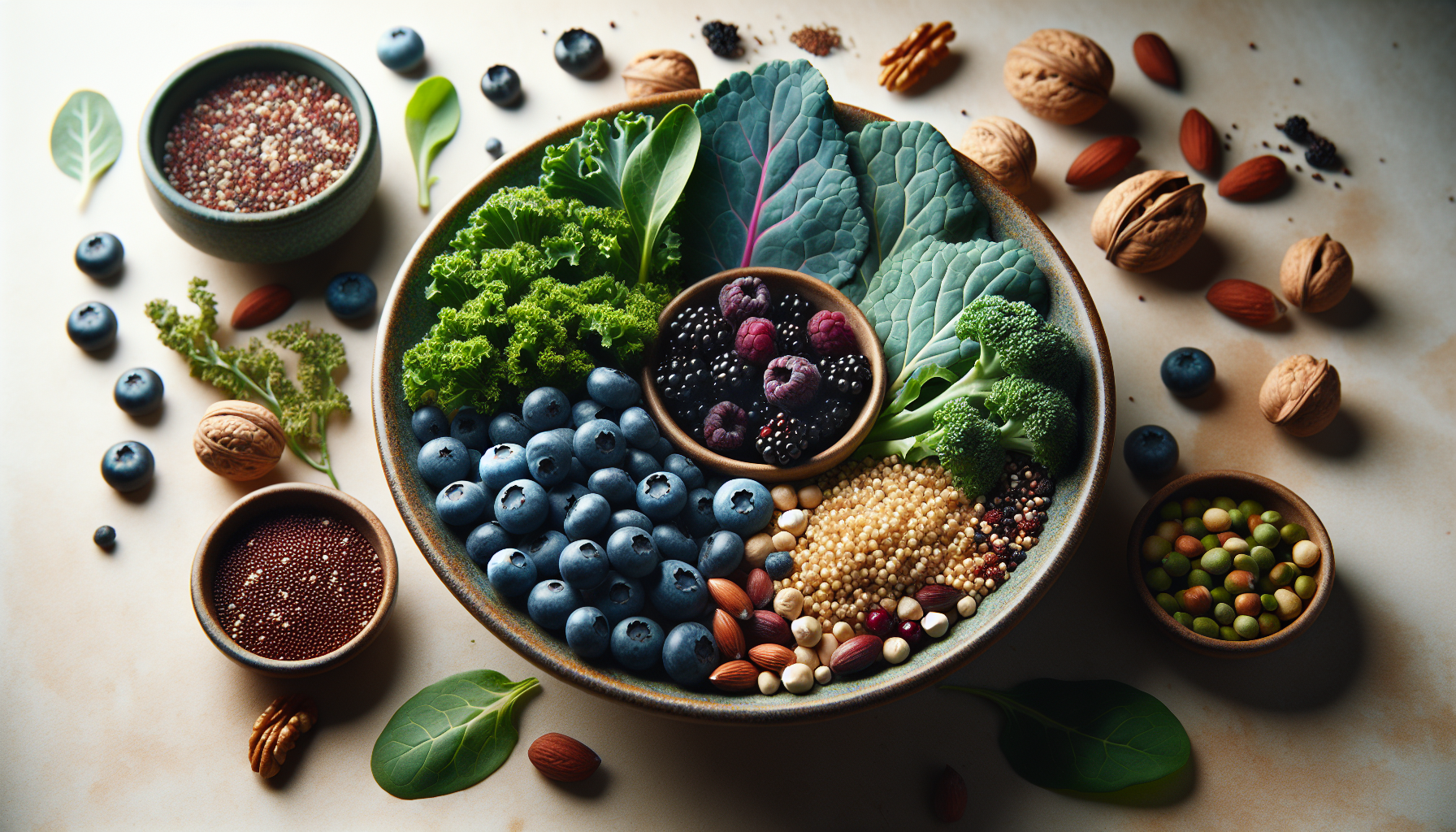Is it possible that the secret to eternal youth lies in your pantry hiding behind the cereal or next to the pot where you stash your desperate-need-of-coffee coffee? Superfoods are the flashy, red-carpet food celebrities that have entered our mundane eating habits promising health benefits like a sneaky backdoor way of cheating death. Underneath the allure of ancient grains, kale so kale-like it practically comes with a pair of yoga pants, and berries with monikers that sound like avant-garde rock bands, there lies a scientific tale waiting to be unveiled. Admittedly, this tale may not include hobbits or dragons, but it does feature antioxidants, flavonoids, and other impressive-sounding compounds.
The mondo-sized question that begs asking is: what superpowers do these superfoods actually possess (besides making you feel sophisticated as you sip your green smoothie)? Let’s wade into this nutrient-rich swamp but remember to bring your snorkel.
## What Exactly Are Superfoods?
Let’s start with the basics, shall we? If you imagined tiny vegetables with capes rescuing kittens from trees, you aren’t entirely off the mark, metaphors excluded. Superfoods aren’t superheroes, but they do pack a proverbial punch when it comes to nutritional benefits. These foods are often dense in nutrients, meaning they contain higher-than-average levels of vitamins, minerals, and antioxidants.
Definition of Superfoods
The dictionary might define superfoods as single food items boasting an unusually high nutrient density, but dictionaries aren’t known for their charisma. In simpler terms, you can think of superfoods as the Sheldon Coopers of the food world—ridiculously smart, a tad understated, and often prone to making us feel inadequate about our nutritional choices. Whether it’s kale, quinoa, or the gloriously named spirulina, these superstars don’t necessarily have supernatural powers, but they make the rest of us feel like we’re not eating bucketloads of kale when we, in fact, are.
Superfoods vs. Regular Foods
Before you envision an intense food-fight standoff between quinoa and your trusty potatoes, let’s not pit superfoods against regular foods like an escalating superhero feud. While superfoods contain the equivalent of what could be an entire Wikipedia page of nutrients, regular foods can still hold their own. For instance, an apple might not come with a Nobel prize in nutrition like blueberries might, but it’s still largely respected for keeping medical professionals at bay. The key difference lies in the nutrient-per-calorie ratio rather than in throwing shade at non-caped vegetables.
## The Big Guns: Antioxidants
It’s time to unfurl the banner of antioxidants, those molecular ninjas that fight back against the villainous free radicals. Antioxidants not only sound like they could fix your car but act as your in-body repair team, helping fight cellular damage and doing the work mere mortals like us can’t even dream of.
How Antioxidants Fight Free Radicals
Picture an epic battle straight out of a Marvel movie—free radicals (goons of the world)—against the tireless protectors (antioxidants). Free radicals are unstable atoms with more than a passing resemblance to hyperactive toddlers who’ve been gifted six bags of candy. They bounce around trying to stabilize themselves, often causing chaos and cellular mayhem. Enter antioxidants, stage right. Cool, calm, and collected, antioxidants donate an electron to these radicals without turning into anarchists themselves, which is no small feat when you think about it.
Examples of Antioxidant-Rich Superfoods
Casablanca had Humphrey Bogart and Ingrid Bergman; the world of superfoods has berries and dark leafy vegetables. Blueberries, strawberries, spinach, and kale headline this antioxidant benefit concert. Each bite is like drinking from the hypothetical fountain of health. Or so you can tell yourself as you prepare another bowl of kale salad in 15 different creative ways.

## Superfoods on a Micronutrient Mission
Move aside macronutrients, there’s a new kid in town, and it’s cooler than a penguin in sunglasses on a snowmobile. Micronutrients, including vitamins and minerals, are those bits of nutrition that, while small in dose, yield mega benefits.
Essential Vitamins and Minerals
Let’s toss aside your daily multivitamin for a moment and acknowledge that while it might come to your aid on a busy morning, there’s something superior about eating the vitamin in its natural glory. Vitamins like Vitamin C and D are found in carrots, citrus, and mushrooms; minerals like magnesium and calcium are nestled in nuts, seeds, and fish. Superfoods can offer a comprehensive vitamin-mineral cocktail your gut will throw a party for.
Micronutrient Heroes in Superfoods
Sunshine, lollipops, and… quinoa? This humble grain boasts a nutritious portfolio rivaled only by the resumes of overactive students. It’s rich in protein, fiber, and several B-vitamins that are vital in energy metabolism. Avocados, meanwhile, hold more potassium than a banana and exhibit a creamy texture so delicious it feels like indulging in some terrible proven sin.
## Digestive Wonders: Fiber
Not to be overshadowed by the more glamorous nutrients, fiber is the unsung hero ensuring everything in your digestive world runs as smoothly as an oil painting.
The Fiber Effect
Fiber aids digestion by adding bulk to stool which (prepare yourself, we’re getting graphic) helps usher waste out of the intestines efficiently. Think of fiber as the bouncer of your digestive tract, assiduously ejecting unruly and unwanted guests.
Superfoods with High Fiber Content
Lentils, beans, and, you might’ve guessed it, kale again, offer substantial fibers. These foods ensure your innards are as suave, and dare I say as dynamic, as any well-run club. Eating them isn’t just about adding bulk—it’s about crafting an intestinal itinerary that’s practically a map to digestive nirvana.

## Omega-3 Fatty Acids: The Brain’s Best Friend
Dive deep into the world of Omega-3s—heart, brain, and mood-enhancing powerhouses. These fatty acids are the love letter you never knew your body wrote to itself.
What Are Omega-3s?
In terms of complexity, Omega-3s rank higher than nuclear physics but provide about as much sustenance: they’re vital polyunsaturated fats. Simply put, they are your body’s secret confidential meeting where key decisions about inflammation reduction and brain health are made.
Superfoods High in Omega-3s
Sardines, salmon, and flaxseeds—though if you’re a vegetarian, please swap the sardinian delight for chia seeds. These foods brim with Omega-3s making them the secret Skrulls covertly plotting well-being in the intergalactic showdown with inflammation.
## Phytonutrients: Nature’s Bizarre Spice
If phytonutrients seem like they wandered out of a sci-fi novel, you wouldn’t be too far off. These chemical compounds found in plants give fruits and vegetables their vibrant hues and often unusual flavors.
Importance of Phytonutrients
Beyond painting fruits and veggies in colors so bright they’d make an artist weep, phytonutrients offer various health benefits including reducing inflammation and enhancing immunity.
Sources of Phytonutrient-Rich Superfoods
Colorful vegetables like carrots, tomatoes, and peppers don’t just appeal to aesthetics—they promise a smorgasbord of phytonutrient multiplicity. From carotenoids to flavonoids, indulge in a RSVFoodP of antioxidant awesomeness.
## Adopting Superfoods Without the Herculean Effort
Now that you’re practically armed with a PhD in the science of superfoods, it’s time to put some of that theory into practical application while maintaining your social calendar—because you’re fabulous like that.
Superfood Smoothies
Throw some spinach, banana, berries, and maybe a hint of your childlike wonder into a blender, and call it divine intervention via smoothie. It’s essentially fresh air for your insides.
Incorporating Superfoods into Meals
Don your chef’s hat, channel your inner Jamie Oliver or Gordon Ramsay minus the cursing, and integrate superfoods into your repertoire. Think quinoa-stuffed bell peppers, kale chips with avocado hummus, and feel the halo over your dietary discretion growing palpable (and slightly sanctimonious).
## Common Misunderstandings
Did someone say… misinformation? Yep, even the world of superfoods is fraught with myths as ridiculous as they are memorable.
Myth: Superfoods Are a Cure-All
If Jeff Goldblum taught us anything, it’s that life finds a way—but not always through kale. Superfoods aren’t miracle-performing, Ferris Bueller-level day-saving foods. They’re just here to help, like a charming sidekick in your quest for health.
Myth: All Plant-Based Diets Are Automatically Super
Do plants frequently make you sprout excitedly in conversation? Perhaps you’ve been led astray by the preconception that all plant diets are inherently better. From French fries to chips, plants aren’t synonymous with superfoods and bear no innate sainthood unless proven otherwise. Eating plants is commendable—choose wisely, and a verdant pasture of health awaits.
## Conclusion: The Final Verdict
In conclusion, we salute these superfoods who have rightfully claimed their thrones in the pantheon of nutrition notoriety. They dance fluidly through science like ballroom greats, artfully spinning atoms and vitamins in theatrical displays of wellness. Remember that existing exclusively on a diet of kale and chia seeds might not make you Captain America, but employing balance and variety will help fetch health rewards to rival Valhalla itself—or at the very least keep you in top form pending Ragnarok.
Now, where did I put that superhero cape—er, I mean, smoothie blender? It’s time to tower triumphantly over my own grain bowl and sip with seigneurial glee.
